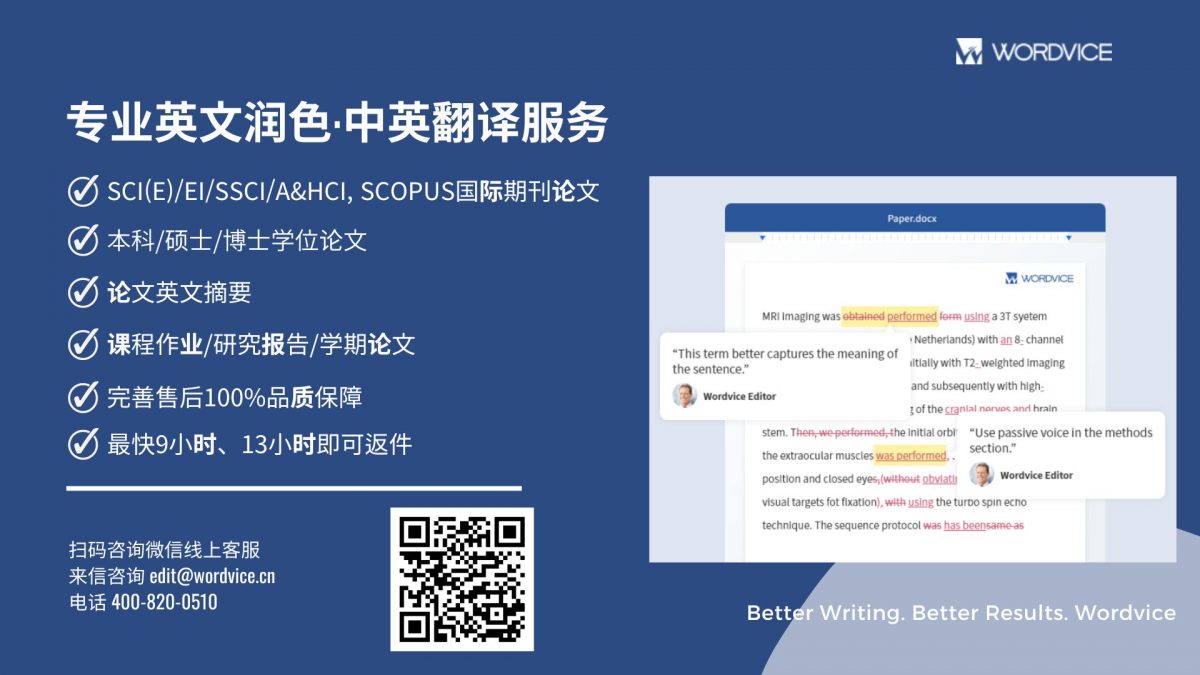由于英文学术论文涉及一般现在时、一般过去时和现在完成时等多种动词时态,并且在论文的各个部分中交叉使用,反映不同的事件时间,表达不同的认知观点,时态的运用构成英文学术写作的一个难点。
正确使用动词时态,不仅需要考虑事件发生的时间因素,而且需要考虑作者想陈述的主观立场。
所谓立场,是指使用过去时描述一个曾经发生的偶然现象,而使用现在时宣称一个普遍适用的科学真理。
本文讨论现在时、过去时和完成时的运用规则。
一、一般现在时
一般现在时用于陈述不因时间而改变的事实,评论科研工作的意义,建议未来的工作。
- 陈述不因时间而改变的事实,例如科学真理。
示例:Insulin and glucagon regulates blood glucose levels.
- 主观推断类似于科学真理的启示。如果使用一般现在时,表示作者相信某个发现或现象不是过去的一次偶然事件,而是具有普遍正确性的科学真理。
示例:An elevated glucose level indicates a lack of glucagon hormones in the pancreas.
- 评价科研工作的重要性,或陈述未来的工作计划。
示例:Further studies about glucagon receptors are needed.
二、一般过去时
一般过去时用于描述在过去某个时间发生的事件,强调过去的操作动作,或强调偶然发生的而尚未被推断为科学真理的事情。
示例:Scientists in Wales discovered a new enzyme in the liver.
示例:Protocol X was used to analyze the data.
三、现在完成时
现在完成时用于描述已经发生并持续到现在仍然在进行的事件。这个时态多用于在引言中描述科研工作的背景,在论文中较少使用。
示例:Many studies have focused on glucagon as an important regulating hormone.
示例:Until recently, researchers have analyzed this kind of data using a Chi- Square Statistic.
示例:Efforts have been made to understand more about this process.
四、按照论文中各部分的特点总结动词时态的用法
- 摘要(Abstract)
摘要是整篇文章的高度浓缩,包括目的、方法、结果、结论等内容。因此,根据每句内容在发生时间和主观立场上的不同情况,需要正确选择动词时态。例如,陈述过去的实验应当使用一般过去时。如果认为结论只是一次偶然性的发现,而并不具有与时间无关的普遍科学真理意义,则应当使用一般过去时。然而,如果推断结论是普适真理,则可以使用一般现在时。在评价科研工作的意义或重要性时,或描述业界的科研现状时,应当使用一般现在时。一般过去时的示例:In 2016, diabetes was the most common endocrine disease.一般现在时的示例:In the US, diabetes is the most common endocrine disease.一般现在时的示例:Diabetes accounts for a higher number of deaths in the US than previously calculated.现在完成时的示例:Recent studies of glucagon and insulin production have led to breakthroughs in medicine.
- 引言(Introduction)
由于引言包括对永恒不变的科学真理的论述、对过去的科研工作的描述、对持续到现在为止仍然在使用的科研方法的论述、对科研工作意义的评价,因此引言通常包含多种时态。一般过去时的示例(描述过去的工作):This same research team discovered a similar enzyme in their 2012 study.一般过去时的示例:The CalTech glucagon studies were inconclusive.一般过去式的示例(使用人名作为句子的主语,描述研究结果):Pearson (1997) discovered a new enzyme using similar methods. 类似的其他动词包括:investigated, compared, studied, analyzed, investigated, found, confirmed, performed。一般现在时的示例(评论过去的研究工作或提到过去研究中发现的科学真理):Ryuku (2005) concludes that there are no additional enzymes present in the liver, a finding this current study directly refutes. 类似的其他动词包括:stresses, advocates, remarks, argues, claims, posits。现在完成时的示例(当研究工作的日期不明确或不重要时):Prior research has indicated a correlation between X and Y.现在完成时的示例:Prior research in this area has been inconclusive.过去完成时的示例(强调截止到过去的某个时间已经发生的事情):The Dublonsky study had determined that X was Y, but a 2012 study found this to be incorrect.
- 方法(Method)
方法部分采用一般现在时描述业界的科研方法现状,而采用一般过去时描述过去的操作动作。一般过去时的示例(描述过去的操作动作):A glucose molecule was added to the mixture to see how the peptide would respond.一般过去时的示例(描述过去的操作动作):The results were analyzed using Bayesian inference.
- 结果(Result)
结果部分采用一般现在时提及图表,而采用一般过去时描述过去发生的科研现象。在描述图表内的数据表现时,如果想强调数据反映的现象只是过去曾经发生的、偶然的、尚未被推断具备与时间或场合无关的普适真理性,应当使用一般过去时。如果想强调图表中反映的现象是一种与时间或场合无关的普适科学真理,则可以使用一般现在时。因此,动词时态的运用直接反映出作者对科研结果真理性评价的主观立场。一般过去时的示例(描述过去偶然发生的科学现象,主动语态):The addition of 0.02 μg of glycogen activated receptor cells.一般过去时的示例(描述过去偶然发生的科学现象,被动语态):Receptor cells were activated by the addition of 0.02μg of glycogen.一般现在时的示例(提及图表,主动语态):Table 5 shows the results of this first isolated test.一般现在时的示例(提及图表,被动语态):The results of this first isolated test are displayed in Table 5.
- 讨论(Discussion)
讨论部分涉及科研发现的分析、解释和意义。一般过去时的示例(总结科研发现):The experiment yielded a number of results associated with the processing of glucose.一般现在时的示例(解释和讨论科研发现的重要性):This study confirms that synthetic glucagon is two-thirds as effective at decreasing fatty acid synthesis.
- 结论与未来工作(Conclusions and future work)
在结论中,如果想强调科研发现只是过去曾经出现的偶然现象,而不是普适的科学真理,那么应当使用一般过去时。如果想强调科研发现被作者认定是普适的科学真理,那么可以使用一般现在时。如果想表达自己的陈述直到现在都还有效,可以使用现在完成时。在展望未来工作时,可以使用一般现在时或一般将来时。
一般现在时的示例:This study confirms that endogenous glucagon is even more essential in metabolism than previously thought.
现在完成时的示例:Results from this study have led to a deeper understanding about how different peptides interact in this enzyme.
一般现在时、一般将来时或假设语气的示例:Further clinical studies are needed/will be needed/must be carried out/should be carried out to isolate the cause of this reaction.
综上所述,遵守以上时态规则,不仅能使句子的含义在时间上正确,而且能够表达作者对于科研结果的肯定、否定、怀疑、认可、推断等主观观点,使得读者能够准确领会作者的用意。

需要英文润色,英语润色,就找Wordvice。
| 资源博客 | 学术论文润色 | 学术论文翻译 | 期刊论文润色 | 毕业论文润色 | 论文摘要润色 | 服务费用 | FAQ |





